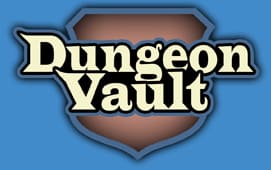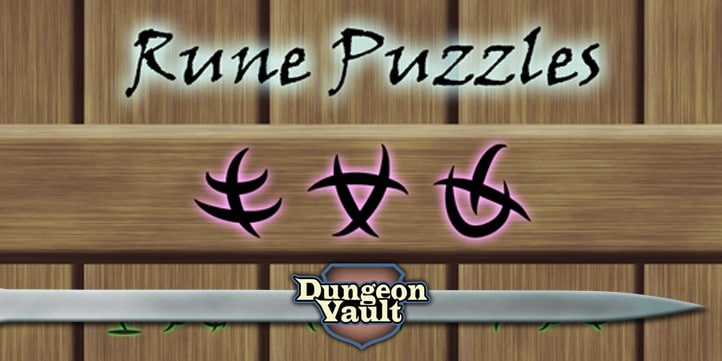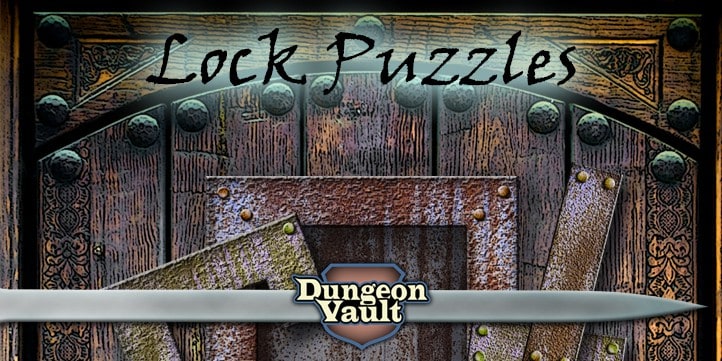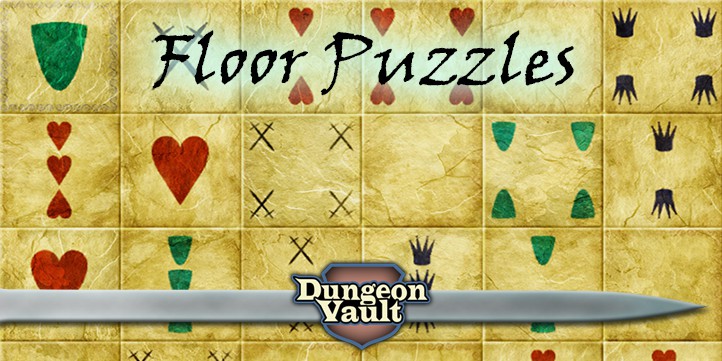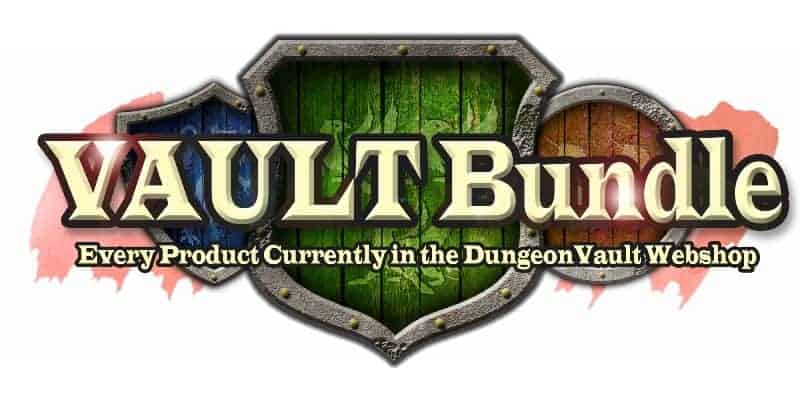
Creating a puzzle adventure for your D&D game can be absolutely awesome. If you get it right, your players will talk about it for years to come. But there is a lot that goes into creating a solid puzzle adventure for your Dungeons & Dragons games. And there is a lot that can go wrong.
In this article we’ll look at the biggest pitfalls in designing your own D&D puzzle adventure and how to avoid them. And we’ll look at an example of a puzzle adventure that you can use with any RPG; D&D or otherwise.
Pitfalls of D&D Puzzle Adventures
An adventure is usually a series of about 2 – 3 D&D sessions. You want to create a puzzle adventure that is both challenging and smooth. No player likes being stuck. Instead, you want to create a flow experience, where players cooperatively solve one task after another getting ever closer to their goal. Here are some pitfalls to avoid in creating such a smooth ride:
The Wrong Amount of Puzzles for your D&D Adventure
You will need the right amount puzzles to add to your game. That seems straightforward right? But the first pitfall is not having enough puzzles or having too many. But how many is enough?
Well, that depends on a lot of factors. Here are some to consider:
- How many players are trying to solve the puzzle?
- How much experience do they have in solving puzzles?
- How much time does it take for a party to solve a puzzle in general?
- Can all character work on a puzzle simultaneously or not?
- Do players have to cooperate to solve the puzzle?
- Are other things going on while trying to solve the puzzle such as combat?
In my experience, a group of four experienced players can usually solve a puzzle in about 60% of the time it would take me to solve that puzzle. So my advice would be to try and solve the puzzles yourself first.
You might think that having more players in your group will shorter the time it takes them to solve a puzzle. That is true to a degree when every player is working on the same puzzle by themselves simultaneously. With more players, odds are one of them will solve the puzzle quicker. But even with a large group, solving a puzzle takes time.
If your players are working together, solving a puzzle might even take more time. The more cooperation that is required, the more time players need. So a large group can actually be slower than a small one.
I prefer players work together. D&D is a cooperative game. And working together involves everyone. If every player is working by themselves only the one that solves a puzzle the fastest, gets to feel successful while the rest feel like they’ve failed. So cooperation is key.
A good puzzle challenge takes about 5 to 20 minutes. Any longer and your players might get bored. Pick puzzles that don’t take too long, have the story continue, and introduce a different puzzle in your adventure. Variety is the spice of life. Finally, in a four hour D&D session I like players to spend about half their time on puzzles and half on doing other stuff. That seems to be a puzzle to exploration ratio most players are comfortable with.
Getting Stuck in Your D&D Puzzle Adventure
One of the things players and DMs dread most in running puzzle adventures is getting stuck. Puzzle adventures can provide a wonderful feeling of flow and progress. But if players get stuck they’ll feel a distinct lack of flow. So how do you avoid that?
The best way to avoid getting stuck is by picking the right puzzles. There are a lot of D&D puzzles that have a trick to them. Know the trick and solving the puzzle is easy, but if you don’t know the trick if can take hours, or days.
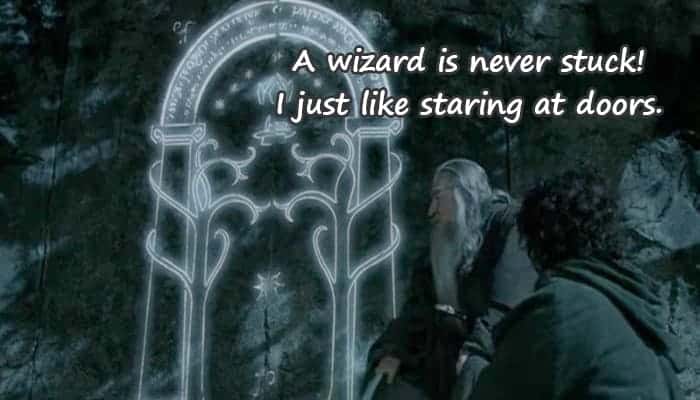
These types of puzzles aren’t enjoyable and you should avoid them in your D&D puzzle adventures. Instead, use puzzles that have a lot of simple steps to them. While each step is easy to solve, working out the whole puzzle still takes some time. Games like minesweeper are perfect in this regard. Each step is easy, but it will take players a while to solve them all.
In minesweeper if a player makes a mistake everything goes kaboom! That doesn’t work very well in D&D puzzle adventures. Instead, you want to heighten the tension and create consequences for their characters. So every time they make a mistake, the water level rises, a monster is summoned, or a small portion of the treasure falls into a lava pit. This will immerse the players into the story, instead of having them fail completely which brings your story to a halt. Flow is key.
Another great way to ensure players don’t get stuck is using skill and ability checks, which brings me to the next pitfall.
Not Challenging Players and their Characters
One of the most common criticisms of D&D puzzle adventures is that puzzles challenge the players and not their characters. But that doesn’t have to be true.
Every challenge in D&D – whether it is combat, a social encounter, or even exploring a dungeon – is a puzzle in disguise. For instance:
If a pc is fighting a horde of goblins the pc’s stats and die rolls matter. The DM is challenging the character. But it also matters what tactics the player uses. Will they jump into the fray or skirt the edges? Will they seek higher ground, split the party, disengage? These decisions challenge the player. The same is true for social encounters. Sure, the character has a high charisma score, but the player still plays out the encounter as well.
In short, good encounters challenge both the players and their characters. The simplest way to achieve this is to introduce ability checks to get a hint. If you are using puzzles that have lots of little steps, you can give away hints easily. Just give them the next step. Personally, I like to give players a number of ability checks equal to their intelligence modifier per challenge.
You can also use checks that don’t directly relate to the puzzle. A rogue might have to scale a wall to pull a lever. The barbarian stops an army of zombies from entering while other members solve the puzzle. It’s easy to adjust puzzle challenges in this way. Just make sure everyone gets a chance to shine.
Finally, if a pc has too low intelligence to solve the puzzle, but the player did solve the puzzle, they can roleplay using a completely flawed line of reasoning to accidentally arrive at the exact correct conclusion.
Not Creating an Immersive Experience
D&D puzzle adventures can both be a tool to create a great sense of immersion or something that completely takes players out of the game world. It all depends on how you present your puzzles.
You can create an immersive experience by using printed puzzle pieces that match your fantasy world. Don’t just give players a sudoku to solve, but invest in making the puzzle a logical part of your game world.
On this website I’ve created the Vault Bundle which has over 200 illustrated puzzles you can use in your D&D puzzle adventures. These puzzle avoid the pitfalls I’ve discussed here so be sure to check those out.
Creating a sense of immersion also means coming up with a way to make solving the puzzle really matter to player characters. Perhaps they need to open a door to save a friend who is losing hit points every minute. Perhaps solving the puzzle helps them flee mortal danger. You don’t have to create a sense of danger every time, but doing so can help with immersion.
Best Puzzles for D&D Adventures
Over the years I’ve created a ton of puzzles for D&D adventures and other RPGs. I’ve designed these puzzles to avoid the pitfalls mentioned before and to be easily dropped into your custom adventure. This way, you get maximum freedom in creating the story for your own D&D puzzle adventure without having to spend hours on designing puzzles and artwork.
Most DMs I speak to like to rip interesting challenges out of premade modules to use in their adventures anyway. So I figured creating packs of puzzle challenges would save you the trouble. I’ll explain a few puzzle packs here to illustrate how you could use them in your D&D adventures.
Rune Puzzles for D&D Adventures
Rune puzzles is one of my most versatile puzzle packs. It contains 30 rune words that you can drop onto any object. If you want to lock treasure chests, maps, doors, portals, or even magical items. You just drop a rune puzzle on it and you’re done.
Players have to find all the clues to translating the runes first. Next they have to solve an anagram, and then figure out the cryptic description of an object. Touch that object to the rune word and the puzzle is solved.
Of course, you still have to justify the rune words existence. There are a ton of options. Maybe a wizard put it there believing nobody would be intelligent enough to figure out the runes. Or puzzle-loving fey placed the puzzle there. A holy order might have placed the puzzle so only the wise and worthy could solve it. And so on. You can use whatever story fits your adventure.
The pack contains both a print out version and images with transparency for virtual tabletop play. If you print out the runes, you can draw an image behind them. If you use the images with transparency, you can layer them to look like the rune are etched into the object.
Lock Puzzles for D&D Adventures
Lock Puzzles are another pack of puzzles that you can very easily integrate with any D&D adventure. You drop a series of puzzle frames onto an object. Filling out one frame with puzzle pieces is usually very easy. But filling out all frames simultaneously, is increasingly hard. With just nine puzzle frames, you can create over 500 different puzzles. More than you will need in any puzzle adventure. And the locks have a mechanical look. So they go with low magic fantasy settings, scifi or steampunk as well.
Floor Puzzles for D&D Adventures
Floor Puzzles require PCs to walk a specific pattern across the floor to solve the puzzle. A solved puzzles can trigger any event from opening a door to releasing a kraken. Anything that will allow players to proceed to the next step in your adventure.
You can integrate this puzzle into your D&D adventure in any way you like. But the pack also contains four short card games that you can use with the puzzles. And each puzzle reveals a bit of lore of four races: Orc, elf, dwarf, and halfling. This flavour is optional.
The Vault Bundle
The Vault Bundle contains all the puzzle packs on this website and much more. You’ll get enough puzzles to last you a lifetime of DMing. It also contains the Murder in the Monastery puzzle adventure which is compatible with D&D. If you don’t want to create anything yourself, you can just print it and play straight away. For a full overview of everything that is in the Vault Bundle click here.
By: Paul Camp
Image credit: WotC, New line cinema
